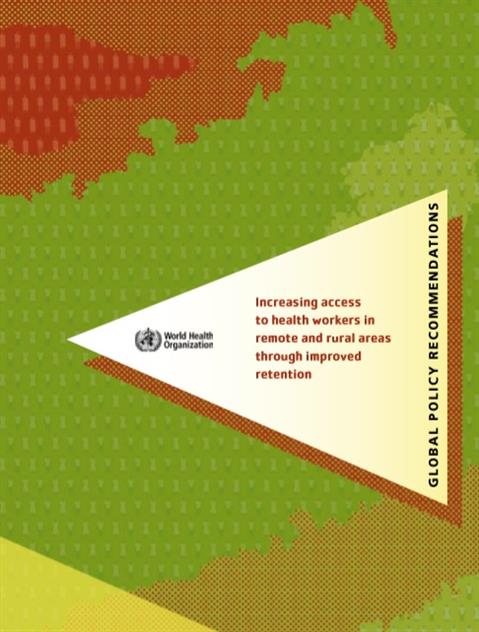Increasing access to health workers in remote and rural areas through improved retention
Global policy recommendations

Overview
Half the world’s people currently live in rural and remote areas. The problem is that most health
workers live and work in cities. This imbalance is common to almost all countries and poses a major
challenge to the nationwide provision of health services. Its impact, however, is most severe in low
income countries.
There are two reasons for this. One is that many of these countries already suffer
from acute shortages of health workers - in all areas. The other is that the proportion of the population living in rural regions tends to be greater in poorer countries than in rich ones.
The World Health Organization (WHO) has therefore drawn up a comprehensive set of strategies
to help countries encourage health workers to live and work in remote and rural areas.
These
include refining the ways students are selected and educated, as well as creating better working
and living conditions.
The first step has been to establish what works, through a year-long process that has involved a
wide range of experts from all regions of the world. The second is to share the results with those
who need them, via the guidelines contained in this document. The third will be to implement
them, and to monitor and evaluate progress, and - critically - to act on the findings of that
monitoring and evaluation.
The guidelines are a practical tool that all countries can use. As such, they complement the WHO
Global Code of Practice on the International Recruitment of Health Personnel, adopted by the
Sixty-third World Health Assembly in May 2010.
The Code offers a framework to manage international migration over the medium to longer term.
The guidelines are a tool that can be used straight away to address one of the first triggers to
internal and international migration - dissatisfaction with living and working conditions in rural
areas.
Together, the code of practice and these new guidelines provide countries with instruments to
improve workforce distribution and enhance health services. Doing so will address a long-standing
problem, contribute to more equitable access to health care, and boost prospects for improving
maternal and child health and combating diseases such as AIDS, tuberculosis and malaria.
Annex 1: Grade evidence profiles
Annex 2: Descriptive evidence profiles
Executive Summary
